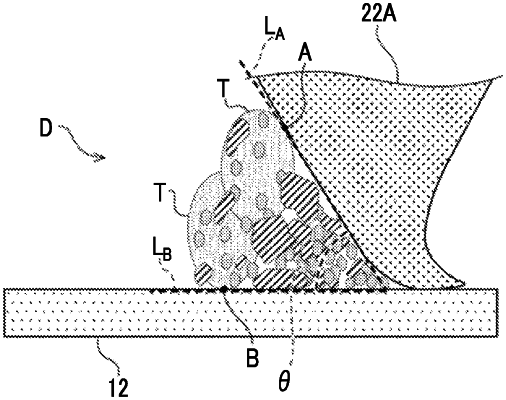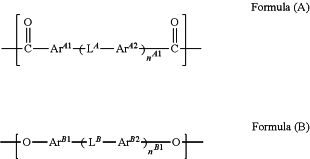| CPC G03G 15/0233 (2013.01) [G03G 5/0567 (2013.01); G03G 5/0605 (2013.01); G03G 5/061473 (2020.05); G03G 15/0806 (2013.01); G03G 15/752 (2013.01); G03G 21/0011 (2013.01); G03G 2215/00518 (2013.01)] | 9 Claims |

|
1. An image forming apparatus comprising:
an electrophotographic photoreceptor that has a photosensitive layer constituting a surface of the electrophotographic photoreceptor;
a charging device that charges the surface of the electrophotographic photoreceptor;
an electrostatic charge image forming device that forms an electrostatic charge image on the charged surface of the electrophotographic photoreceptor;
a developing device that accommodates a developer containing a toner which contains toner particles and an external additive, and develops the electrostatic charge image formed on the surface of the electrophotographic photoreceptor by the developer as a toner image;
a transfer device that transfers the toner image formed on the surface of the electrophotographic photoreceptor to a surface of a recording medium; and
a cleaning device that includes a cleaning blade coming into contact with the surface of the electrophotographic photoreceptor and cleaning at least residual toner particles on the surface of the electrophotographic photoreceptor,
wherein the photosensitive layer of the electrophotographic photoreceptor contains a polyester resin (1) having a dicarboxylic acid unit (A) represented by Formula (A) and a diol unit (B) represented by Formula (B), and
an angle θ between a tangent line at a contact point between the cleaning blade and the residual toner particles and a tangent line at a contact point between the residual toner particles and the surface of the electrophotographic photoreceptor is 35° or greater and 50° or less,
 in Formula (A), ArA1 and ArA2 each independently represent an aromatic ring that may have a substituent, LA represents a single bond or a divalent linking group, and nA1 represents 0, 1, or 2,
in Formula (B), ArB1 and ArB2 each independently represent an aromatic ring that may have a substituent, LB represents a single bond, an oxygen atom, a sulfur atom, or —C(Rb1)(Rb2)—, nB1 represents 0, 1, or 2, Rb1 and Rb2 each independently represent a hydrogen atom, an alkyl group having 1 or more and 20 or less carbon atoms, an aryl group having 6 or more and 12 or less carbon atoms, or an aralkyl group having 7 or more and 20 or less carbon atoms, and Rb1 and Rb2 may be bonded to each other to form a cyclic alkyl group.
|